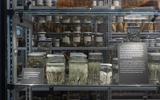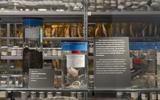1. Why do we need collections?
Scientific collections contain a treasure trove of information. Millions of preserved animal and plant species allow, among others, studying the origin, distribution and diversity of species, and recording the effects of environmental pollution and climate change on many organisms. These collections are an extremely valuable reference for identifying organisms of already described species, or the discovery of new species. Collections are also a window into the future: They can give us answers to questions we haven’t even thought of yet.
1.1 Understanding and protecting biodiversity
Most people know animals such as tigers and pandas. However, these well-known favourites represent only a very small proportion of global biodiversity. The majority of species are inconspicuous. Organisms like insects, spiders and snails make up a huge and largely unknown diversity of animal species, which can only be recorded, analysed and documented by specialists. Only exact knowledge of the species creates the necessary arguments to protect the last species-rich habitats, such as rainforests, from destruction.
1.2 Recording losses:
Barely discovered, these fishes – which include the world’s smallest fish – are either critically endangered or already extinct. Largely unknown so far, these very locally occurring animals are disappearing extremely quickly due to peat swamp forests in Southeast Asia being relentlessly destroyed to make way for oil palm plantations.

1.3 Black Widow Toad
This black widow toad is a so-called ‘type’ or ‘type specimen’. Such particularly valuable and irreplaceable specimens are the prototypes, the ‘standards’ on which the description of a species is based. The scientific name of a species if permanently attached to these individuals. Scientific collections have an important responsibility to preserve them.

1.4 Ugly brown frog
These ‘ugly brown frogs’, once considered a single species, are a striking example of how different species can look undistinguishable from each other. In 2019, researchers identified 25 different species of brown frog, all of which probably have specific habitat and feeding requirements.

